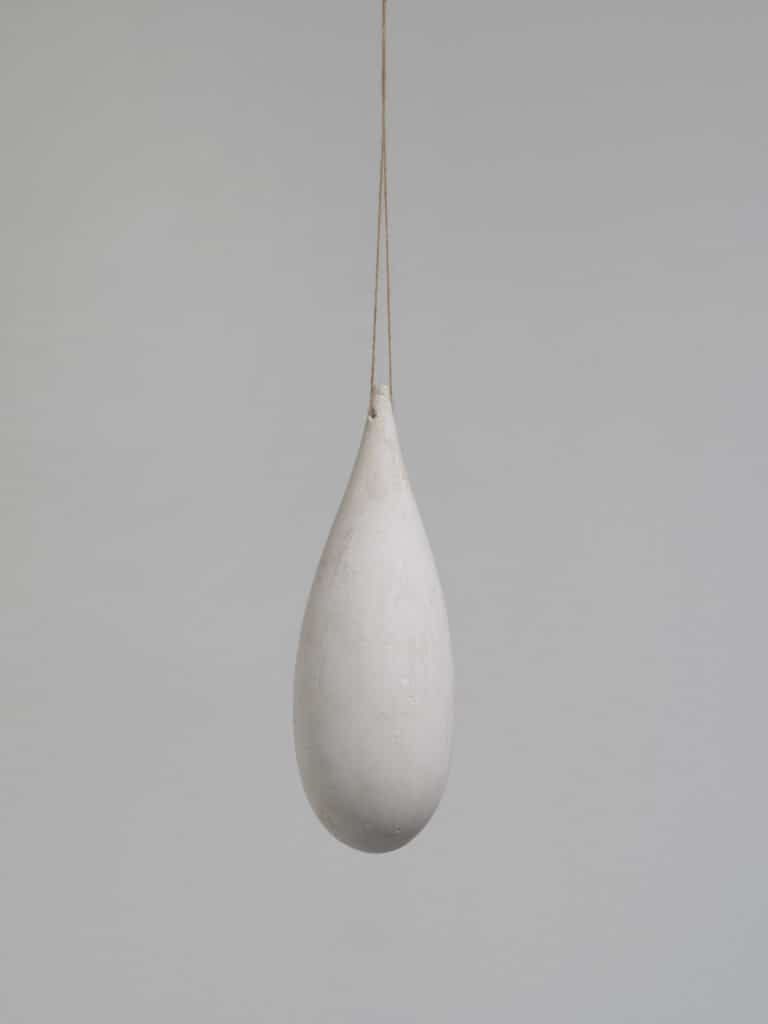Tate Modern has opened the UK’s first major exhibition of the work of Maria Bartuszová (1936-1996), an artist who defined the world of sculpture on her own terms using innovative methods in plaster casting. From raindrops and eggs to the human body, Bartuszová took inspiration from organic forms and cycles in the natural world. Spanning the breadth of her remarkable 30-year career, this show will reveal a prolific body of tactile, sensual, and evocative sculptures, shaped by the artist’s personal experiences and deep love of nature. Bringing together over 50 of Bartuszová’s delicate plaster works alongside bronze casts and aluminium reliefs – many of which have never been shown in this country before – it will offer a rare chance to discover how this little-known artist transformed abstract sculpture with works that capture the vitality and precarity of life.

Although born in Prague, Bartuszová spent the majority of her career in Košice, the second largest city in what was then Czechoslovakia, near the border with Hungary and Ukraine. Closed off from direct contact with European and global events during the Cold War, she worked in relative seclusion, with few opportunities to exhibit during her lifetime. Despite the challenges of living under a totalitarian system and at a time with few opportunities for women artists, Bartuszová built an outstanding legacy of around 500 sculptures which remain a testament to her unique vision and persistent experimentation.

The exhibition will explore how Bartuszová worked inventively and quickly, using the fleeting and liquid process of casting to create simultaneously solid and delicate artworks. In the early 1960s, inspired by playing with an inflatable ball with her young daughter, she created abstract shapes by pouring plaster into rubber balloons and molding it using pressure and tension, a method she coined ‘gravistimulation’.


The resulting works reflect the artist’s profound connection to nature, evoking living and growing forms while continuing to retain the presence of the body. Experimenting further in the 1980s, Bartuszová developed a new practice of plaster shaping she termed ‘pneumatic casting’, in which she blew air into balloons and poured plaster over their surface. This created empty, negative volumes and ever more fragile, hollow shapes resembling shells and eggs – described by the artist as “a tiny void full of a tiny infinite universe”. Works from Bartuszová’s Endless Egg series will be displayed alongside elaborate eggshell clusters such as Untitled (1984), expressing feelings of personal crisis in their fragility and destruction.

Bartuszová continually explored ways in which sculpture could engage the imagination and activate the senses. In the mid-1960s she began creating plaster sculptures composed of interlocking shapes, such as Folded Figure (1965), and later bronze and aluminium puzzle-like sculptures such as Folded Figure, Horizontal, Haptic, (1974 cast 1975) which could be taken apart and reassembled to spark creative thinking. A range of rarely seen archive photographs by art historian and photographer Gabriel Kladek document how her sculptures were innovatively used in expressive workshops for blind and partially sighted children.

The exhibition will also highlight how forms and themes that the artist developed in her studio were brought into public spaces through her state-funded commissions for buildings, monuments, playgrounds and fountains. The elongated droplets of Rain (1963), for example, are echoed in the bronze fountain she created for the Institute for Physically Disabled Children in Košice (1967–71), while her geometric wall-based works inspired her monumental reliefs for the Southern Slovak Paper Mill (1973–5) and Eastern Slovak Steelworks (1974). Visitors will also discover the futuristic models Bartuszová designed for playground climbing frames and slides and explore the making process behind her monumental public sculpture Metamorphosis, Two-Part Sculpture (1982) at the entrance to the Košice crematorium.

Maria Bartuszová, Tate Modern, 20th September 2022 – 16th April 2023
Maria Bartuszová is curated by Juliet Bingham, Curator, International Art, Tate Modern and Dina Akhmadeeva, Beatriz Cifuentes Feliciano, Assistant Curators, International Art, Tate Modern. It is supported by the Maria Bartuszová Exhibition Supporters Circle, Tate Americas Foundation, Tate International Council and Tate Patrons. The exhibition will be accompanied by a new catalogue from Tate Publishing, edited by Juliet Bingham and Gabriela Garlatyová. Gabriela Garlatyová is a curator and art historian; she is Curator of The Archive of Maria Bartuszová and the Estate, and editor of the artist’s 2022 catalogue raisonné.







